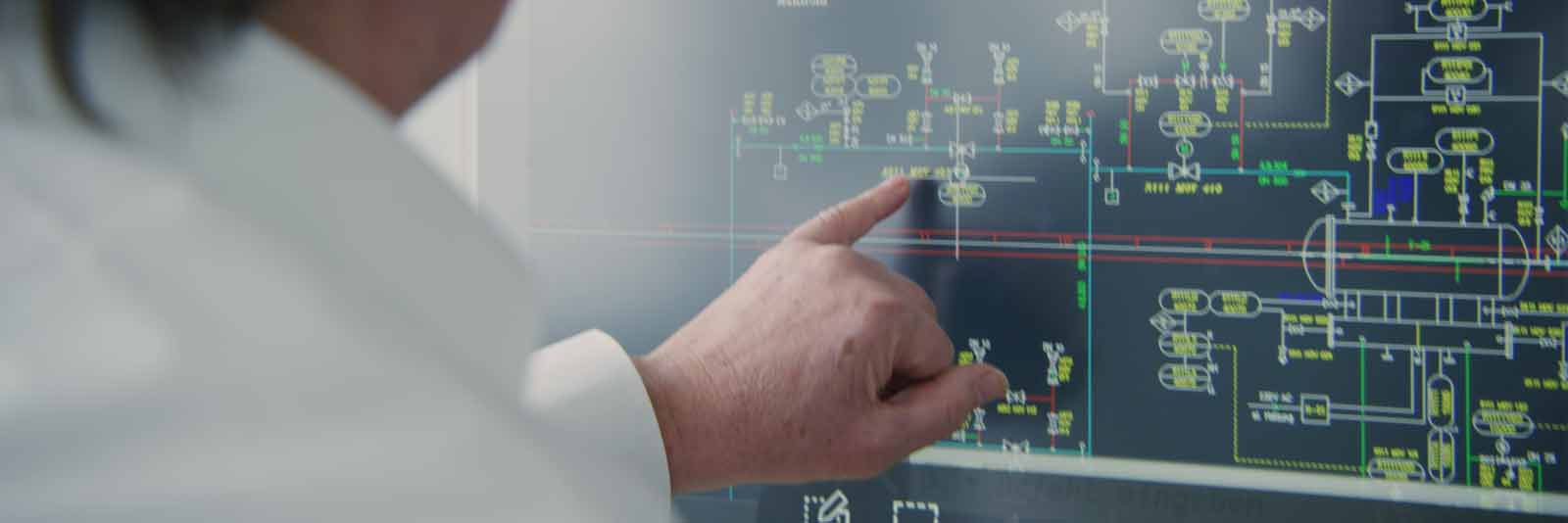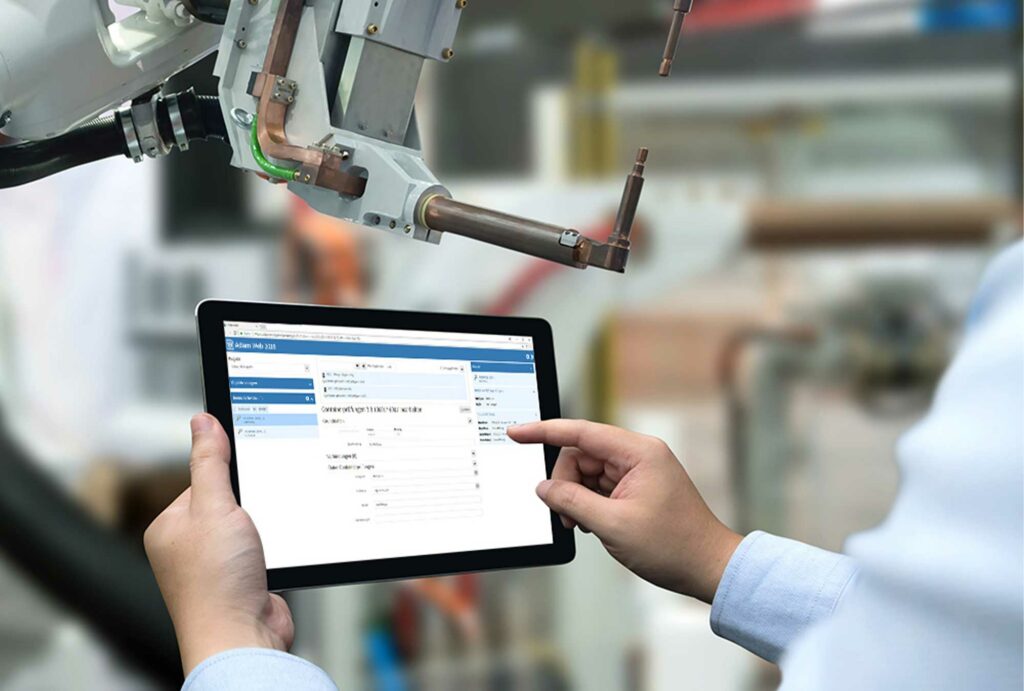Document management software
With a modern document management software the productivity in your company increases. The Menger Group explains how you can find the right DMS software.

How to find the right DMS software for your business
Modern document management increases productivity in your company because your employees can concentrate on what’s important: Their work. The Menger Group explains how document management works, what types of DMS software there are and what you should look out for when choosing.

Document management increases the efficiency of your company
Today, practically all companies produce large quantities of documents that are worthy of archiving and subject to archiving requirements. In many cases, these are still stored in the traditional way in filing cabinets or archives, while digital documents are stored on some hard drive. If a document is then needed, a time-consuming search begins, which in the worst case remains unsuccessful.
Modern document management systems (DMS) make it possible to capture all documents and store them in a single, digital archive: From personnel files and customer data to work instructions, guidelines and applicable standards, all important documents are in one central location. Thanks to uniform indexing and extensive search functions, they can be found, viewed, and edited at any time – without the need for tedious searches in a traditional paper archive. Copies and sometimes outdated versions of individual documents are now a thing of the past. At the same time, all documents in the DMS are protected from unauthorized access, and thanks to automatic versioning, changes can be tracked at any time. Thus, the use of a DMS not only increases efficiency and productivity in the company, but also the quality of work.
What to look for when choosing DMS software

The choice of the appropriate document management software for a company should always be made individually and according to the actual needs. In addition to the pure acquisition costs, you should also consider the technical design, the scope of services and the compatibility with the systems already in use in your company. In the following, we would like to briefly present the most important selection criteria.
Freeware vs. paid DMS
Document management systems are available from numerous manufacturers and are offered in both paid and free variants. Both types of DMS software each have their own advantages and disadvantages:
If you decide to use DMS software offered as freeware, then the supposed cost savings are initially its central advantage. No license fees are charged for freeware, which becomes all the more important the more employees are to actively use the DMS and the more licenses are thus saved. Some costs, such as for operating a DMS server, are nevertheless unavoidable.
In addition, a free document management tool often gives you the right to customize the program to suit your individual needs, but this requires appropriate IT skills. Instead, many companies rely on a developer community to further develop the software and provide regular updates. In general, however, the user of a freeware DMS is responsible for ensuring that it is up to date and complies with all applicable regulations, e.g. on data protection or archiving. However, if carelessness occurs here, resulting in legal violations and breaches of duty, this can quickly lead to enormous consequential costs.
The opposite of a freeware DMS is a paid document management software. These are commercial applications that you purchase a license to use. Paid DMS software is more expensive than freeware, but in return you have a reliable partner at your side, who takes over the further development of the software and is responsible for its up-to-dateness and security.
Paid DMS software is also often adaptable to the individual requirements in your company. However, the necessary changes are not made by you, but by the software manufacturer. You therefore receive a product from a single source and, in the event of problems, you always have a competent contact person who will find a solution for you.
DMS "on premises" vs. cloud-based solution
Furthermore, DMS software can be differentiated according to whether the documents are backed up locally (“on premises”) or in the cloud. In this case, too, both variants have their own advantages, but also disadvantages:
The so-called “on premises” solutions are local document management programs that are installed on a server owned by the user and can usually only be accessed directly on site. In most cases, licenses of fee-based DMS programs are purchased for this purpose. Setup is usually handled by the in-house IT department, but can also be done by the developer of the DMS itself.
“On Premises” solutions have two major advantages: First, the DMS can be customized to meet the exact needs of the company in question. Second, all data stored in the DMS is under the user’s control at all times. On the other hand, the user bears greater responsibility, because he has to take care of the provision of the server infrastructure, the up-to-dateness of the software, regular backups, etc.
The opposite of a local one is a cloud-based DMS, which your employees can access online and from any location (for example, via smartphone or tablet app). Such DMS solutions are also known as “Software-as-a-Service” (SaaS), because here the software is provided as a service that incurs a subscription fee for its use.
SaaS solutions have several advantages: Because the document management program is installed in the cloud, the user does not have to provide their own IT infrastructure, which saves costs. In addition, the manufacturer of the DMS always keeps it up to date through automatic updates and is responsible for ensuring that no data is lost. On the other hand, subscription fees incur ongoing costs and a constant Internet connection is required to access the documents stored online in the document management program. Last but not least, you have to trust that the DMS provider secures its servers sufficiently to prevent access by unauthorized persons.
CRM, DATEV and CAD interfaces
In order for document management software to optimally complement the software already in use in your company, it must have interfaces for exchanging information with this software. The possibility to cooperate with common office software is given in practically all document management systems. However, the available interfaces to CRM, DATEV and CAD programs in the document management program should also play a major role in selecting the right DMS.
CRM programs are used to maintain customer contacts and manage customer data. If a document management program has a CRM interface, it can, for example, automatically transfer a customer’s address data from the CRM software when a letter is to be sent to them. Conversely, the data of a new customer can be transferred directly from the DMS to the CRM program.
DATEV software is used by numerous companies, for example, to maintain legally compliant accounting. Because invoices and receipts are usually also processed, filed and archived in a DMS, the document management software used should have a DATEV interface so that information can be exchanged directly with the DATEV software.
CAD programs are used for the computer-aided creation of technical drawings. With a CAD interface, document management software can display the contents of a CAD file and read out and meaningfully link the information it contains. Provided that there are appropriate interfaces in the DMS, it is thus possible, for example, to use different CAD programs side by side without any problems.
Document management increases the efficiency of your company
Every company has different requirements for managing and archiving the documents it produces. To find a document management software that fits your company, you should therefore first carefully examine the existing needs and requirements. Answer the following questions:
- How much should the DMS cost?
If you want the DMS to be as inexpensive as possible, then opt for a freeware solution that is developed by a voluntary community. In this case, you are responsible for ensuring that the software is always up-to-date, secure and legally compliant.
If you decide to purchase a paid DMS instead, you will receive software for which the developer is responsible for keeping it up to date and secure.
Caution: Costs for the necessary IT infrastructure or Internet connection are always incurred. Also keep in mind: If you save in the wrong place, you can quickly be left with large expenses.
- How much responsibility do you want to take on?
Are you willing and able to take responsibility for the IT infrastructure yourself? If the DMS is installed on a server that you own, you have control over all the data and can often customize the software to your exact requirements. However, you are responsible for ensuring that regular updates, backups, etc. are performed.
With a cloud-based DMS, all data is stored in the cloud. Your company only needs to have a permanent internet connection. The responsibility for keeping the DMS up to date lies with its provider.
- How important are control and security??
If your company works with particularly sensitive data, then security should be a primary consideration when choosing a DMS. If you choose a cloud-based DMS solution where data is stored online, you give up some control to the operator of the DMS server. On the other hand, with a local DMS, you yourself are responsible for ensuring that the data is protected from unauthorized access.
- Should the DMS also be usable on the move?
If your employees are often on the road, it can be an advantage if the DMS is designed for mobile access. In this case, it is often cloud-based document management programs that can be used directly from a smartphone or tablet via an app.
- Who should use the DMS?
Depending on which departments of your company are to work with the document management software, different functions will be needed. If the DMS is only to be used in personnel management and accounting, a smaller program with a limited scope will suffice. If, on the other hand, it is to be used as a complete solution throughout the entire company, then you will need a powerful system which, as an “all-rounder”, meets the requirements of all departments. Of course, all employees must also be trained in the use of the DMS.
- Which interfaces to other programs are needed?
For the DMS to be a real asset to your company, it should work smoothly with the rest of the software. Interfaces to the software used in your company should either be available from the outset or can be added by the manufacturer of the DMS software.
Based on your answers, it is now clear whether a paid or freeware DMS is a possibility for your company, whether the documents should be stored on a local server or in the cloud, and which interfaces and functions must be available. Now you can target document management software providers.
At the Menger Group, you will find a document management system that is tailored exactly to your company’s needs – including mobile availability, interfaces to a variety of databases and CAD programs, and integration with your labeling system. Contact us!